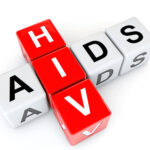Data circulating about HIV indicates 3.2 million Nigerians living with the virus. “And they are just living there and floating in the air,” says Victor Omosehin. “It is the struggle for survival.”
So is the country’s programme for HIV. For years, it has been largely run with funding from the U.S. President’s Emergency Plan for AIDS Relief.
PEPFAR has invested more than $5 billion as at 2017 to provide antiretroviral treatment for 880,668 people, testing for 7.76 million, and care and support for 1.28 million orphans, vulnerable children and their caregivers.
Total funding from PEPFAR dropped, from $409.1m in 2016 to $383.6m, in 2017.
The gain for the programme is a loss for close to a million said to be on treatment across nearly 4,000 facilities that provide services.
“What’s changed is that we are suffering the way we used to suffer,” Omosehin. He is national coordinator of the Network of People Living with HIV/AIDS.
“Responsibility for commodities and logistics at facilities providing services—some of those things we used to depend on—has been shifted to the patient. All of these unnecessary charges are barriers to treatment.”

Billing troubles
Tests for viral load, CD4 count, blood count costs anything between N2,000 and N3,000 each and some centres tag on a N1,000 every month patients pick up their drugs, with patients racking up N12,000 for drug pickup at the end of the year.
Bills of N500 and N1,000 might be considered affordable but many people living with HIV have already seen their finances battered to indigence and unemployment.
“And when you look at the economic situation of the country, even those who are negative are unemployed. How much can we cry as persons living with HIV if the people who are negative don’t even have, not to talk of those of us living with HIV,” says Omosehin.
Some facilities demand payment for every chemistry and haematology evaluation and tests can be up to three times a year, depending on a doctor’s judgement, he adds.
“For an individual who has Ebola, you can’t say they should come pay for treatment. It is a public health concern. If that individual goes back home because of charges, because of even N50, he is going to transmit the infection to a whole lot of communities. The same thing is applicable to HIV. If we are going to put the epidemic under control we shouldn’t attach any charges.”
Reduced funding has hit treatment and prevention the most.
“The number of people on treatment is directly related to unit cost of treatment, which is about procurement of drugs and provision of services,” says Kayode Ogungbemi, assistant director of the National Agency for Control of AIDS.
“Reduction in donor funding can also be a blessing. It is a wake-up call for the country to ensure that we increase domestic funding—and that has picked up in the last two, three years. When we depended on donors, we went to sleep.”
The National Treatment Progamme supports treatment centres in Abia and Taraba, and commits to add 50,000 more patients on the list. It also plans to scale up to six states plus the FCT.
“This is as a result of the threat we are getting from reduction in donor funding. That’s why I say it is a blessing in disguise. We think we can continue to put pressure on federal government to increase domestic funding,” says Ogungbemi.
Data questions
PEPFAR’s uncertainty also raised questions on data: exactly what is the prevalence of HIV in Nigeria. This June, it joined federal government to launch an AIDS indicator and impact survey. It turns out much of prevalence data come from sentinel sites, majorly involving women visiting hospital for antenatal services—excluding men and young people who have no business there.
“If the data has been wrong all this time, that means [the survey] is going to be a game changer,” Ifeanyi Nsofor, health policy advisor at Nigeria Health Watch and chief executive officer at EpiAfric.
“We say prevalence is 3.4%. What if it is actually 1.5%. That means we know the exact burden, we know what is needed to address it and going forward HIV programme becomes based on evidence, not data that’s been distorted all this while.”
Preliminary results show likely less prevalence and incidence, and full results expected next year could change the narrative on HIV burden and coverage so far.
It should also call for Nigeria to take more leadership, and even model its drug procurement on South Africa’s “bulk purchase” model, according to Nsofor.
For the last 10 years, Nigeria has contributed the highest number of HIV deaths—up to 200,000 people in 2016.
“All of that is not questionable,” says Omosehin. “But of course it is not something we should celebrate. It is not football.”

 Join Daily Trust WhatsApp Community For Quick Access To News and Happenings Around You.
Join Daily Trust WhatsApp Community For Quick Access To News and Happenings Around You.
